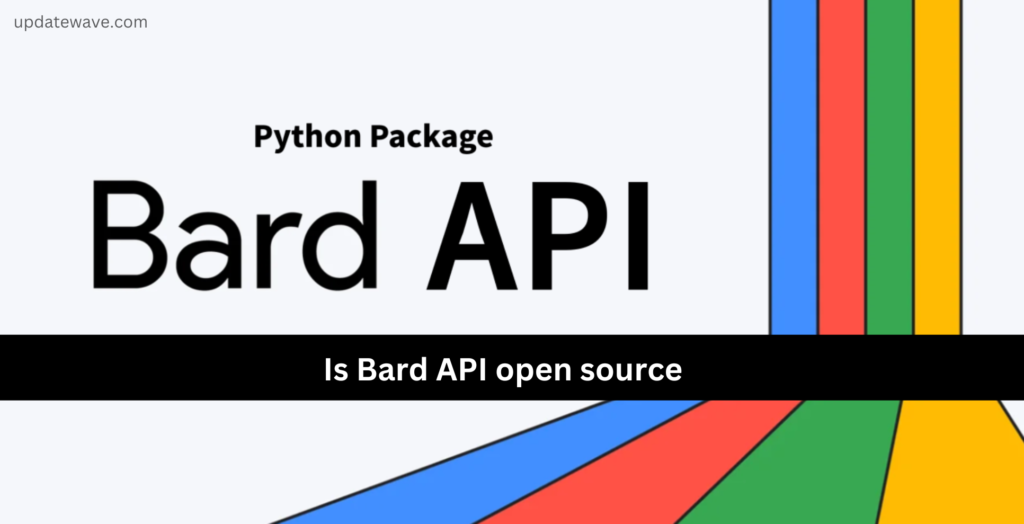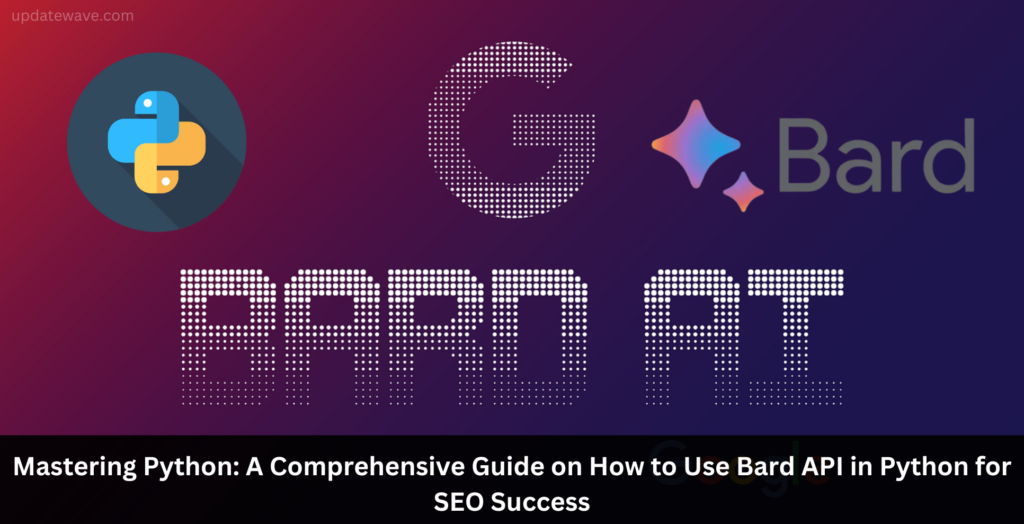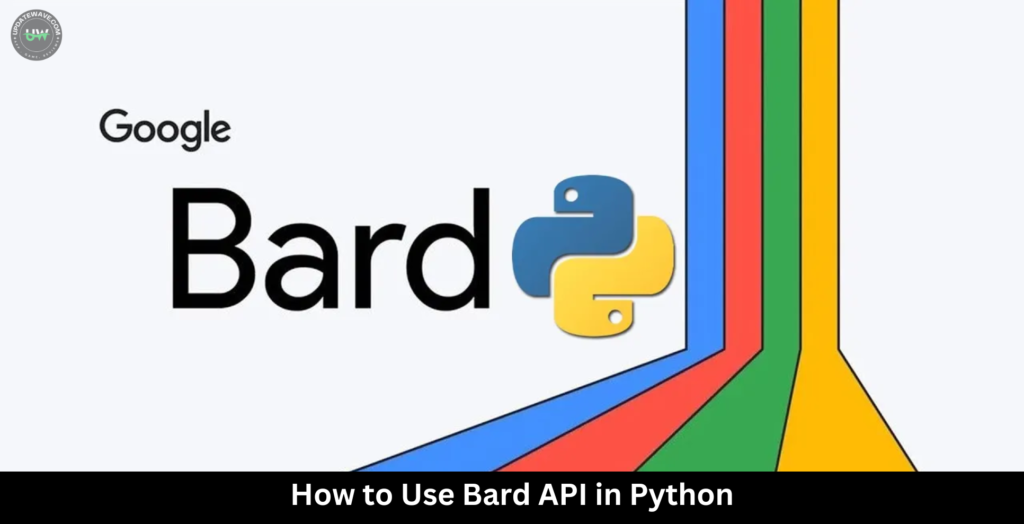Description
A Comprehensive Guide to Using a Bard API in Python
Discover the step-by-step guide on How to Use Bard API in Python to enhance your application’s capabilities. From setting up the API to making API calls and handling responses, this article covers it all. With the help of relevant examples and easy-to-follow instructions, you’ll have a solid understanding of integrating Bard API into your Python projects. Learn how to make the most out of this powerful API and elevate your coding experience with our comprehensive tutorial on how to use Bard API in Python.
How to Use Bard API in Python
The Bard API is a powerful tool that allows you to use Google Bard’s capabilities in your Python applications. To use the Bard API, you will need to install the Bard-API package and obtain your Bard API key. Once you have installed the Bard-API package, you can import the Bard-API module and create a Bard object. You can then call the desired function on the Bard object to perform tasks such as text summarization, translation, creative writing, and question answering.
For example, to summarize a text, you would use the following code:
import bard_api
bard = bard_api.Bard(api_key=”YOUR_API_KEY”)
summary = bard.summarize(“This is a text to be summarized.”)
This code will call the summarize function on the Bard object and pass in the text to be summarized. The summarize function will return a summary of the text.
Why Choose the Bard API?
The Bard API is a cool tool made by Google that lets developers do lots of stuff with text. You can use it to write, translate, or even make chatbots. Here’s why you should check it out:
- It’s powerful: The Bard API uses Google’s smart AI to create text that’s both smart and creative.
- It’s flexible: You can use the Bard API for lots of different things, like making chatbots or translating languages.
- It’s easy: You don’t need to be a coding expert to use the Bard API. It’s simple to add to your apps with just a few lines of code.
- It’s affordable: Compared to other similar tools, the Bard API is pretty cheap. So you get a lot of bang for your buck!

What is the Bard API?
The Bard API is a cool tool from Google that helps developers do all sorts of things with language. You can make text, translate languages, write creative stuff, and even get answers to questions. Right now, it’s in a testing phase and only available to a few people. But you can sign up to try it out on Google’s AI website.
The Bard API is built on a super smart language model called PaLM 2, which is one of the best in the world. It’s been trained on tons of text and code, so it’s good at doing all those language tasks we mentioned earlier.
Getting Started With How to Use Bard API in Python
Google Bard is a large language model (LLM) that can generate text, translate languages, write different kinds of creative content, and answer your questions in an informative way. It is still under development, but it has learned to perform many kinds of tasks, such as
- Summarizing text
- Answering questions
- Generating different creative text formats
- Translating languages
The Bard API allows you to use Google Bard in your own Python applications. This can be useful for a variety of tasks, such as:
- Building a chatbot
- Creating a content generation tool
- Developing a translation app
Getting Started with Bard API in Python
The first step to using Bard API in Python is to install the Bard-API package. You can do this with the following command:
pip install bardapi
Once you have installed the Bard-API package, you can import it into your Python code. The following code imports the Bard-API package and creates a new Bard object:
from bardapi import Bard
bard = Bard()
The Bard object represents a connection to the Bard API. You can use this object to send requests to the API and get responses.
Sending Requests to the Bard API
To send a request to the Bard API, you use the get_answer() method of the Bard object. The get_answer() method takes a single argument, which is the question or statement that you want to ask Bard. The method returns a response object, which contains the following information:
- The content of Bard’s response
- The confidence score of Bard’s response
- The time it took Bard to generate the response
The following code sends a request to the Bard API and gets the response:
response = bard.get_answer(“What is the capital of France?”)
print(response.content)
This code will print the following output:
Paris
The get_answer() method also has a number of optional arguments that you can use to control the behavior of the request. For example, you can use the max_tokens argument to specify the maximum number of tokens that Bard should generate in its response.
Using Bard API in Your Python Applications
Now that you know how to ask the Bard API for help, you can use it in your Python programs. Here are some ideas:
Make a chatbot that can talk to people and write stuff.
Build a tool that writes blogs, articles, or other content all on its own.
Create an app that can change words from one language to another.
There are so many things you can do with the Bard API! It’s a powerful tool that can do lots of jobs for you. With some imagination, you can make your Python programs even better and faster.
Text Summarization with Bard API in Python
Text summarization is like making a short version of a big piece of writing. It helps to pick out the most important stuff from things like research papers or news articles, so you can understand them faster.
The Bard API is a handy tool for doing text summarization in Python. It’s easy to use and works with Google’s smart language model called Bard.
To use the Bard API for text summarization, you can use the following steps:
- Import the bard_api module.
- Create a BardClient object.
- Pass the text to be summarized to the summarize method.
- The summarize method will return a summary of the input text.
Language Translation with Bard API in Python
The Bard API is a powerful tool that can be used to translate text from one language to another. It is built on top of Google’s large language model, which allows it to generate high-quality translations. The Bard API can be used in Python with the help of the Bard-API
To use the Bard API in Python, you first need to install the Bard-API package. You can do this by running the following command in your terminal:
pip install bard-api
Once the Bard-API package is installed, you can import it into your Python code. You can then use the translator() function to translate text from one language to another. For example, the following code will translate the text “Bonjour, comment vas-tu?” from French to English:
from bard_api import translator
translation = translator.translate(“Bonjour, comment vas-tu?”, from_lang=”fr”, to_lang=”en”)
print(translation)
Information Retrieval with Bard API in Python
To use Bard API for information retrieval, you first need to install the package. Once you have installed the package, you can import it into your Python code. Then, you can use the retrieve() function to retrieve information on a particular topic. The retrieve() function takes a string as input, and it returns a list of documents that are relevant to the topic.
For example, the following code retrieves information on the capital of France:
import bard_api
# Input query to retrieve information on
input_query = ‘What is the capital of France?’# Retrieve information on the input query with Bard API
result = bard_api.retrieve(input_query)# Print the results
print(result)
What type of data can I access with the Bard API?
The Bard API is like a big encyclopedia from Google that developers can use to get all sorts of information. Here’s what it can do:
Facts: It can give you facts, like the capital of France or how many people live in China.
Concepts: It can explain stuff, like what words mean or the history of events.
Creative text: It can even write things like poems, code, emails, or musical pieces for you.
Answers: It can answer your questions, even if they’re tricky or weird.
Is Bard API open source?
Google Bard is a large language model (LLM) that is still under development. It is a powerful tool that can be used for a variety of tasks, such as generating text, translating languages, and writing different kinds of creative content.

The Bard API is a way to access Google Bard from your own applications. It is not yet an official API, but there is an open-source implementation available on GitHub.
Limitations of Using the Bard API in Python
The Bard API is a helpful tool for connecting Google Bard with Python projects. But there are some things to keep in mind when using it.
First, the Bard API is still being worked on, so there might be some problems with it. It might have bugs or not be explained very well.
Second, the Bard API can only do certain things. It’s good for asking questions and making text, but it can’t do other stuff like running code or getting files.
Lastly, the Bard API only works with Bard in English. So if you need it to work with other languages, it won’t work.
Even with these limits, the Bard API can still be useful for lots of Python projects. Just make sure you know what it can and can’t do before using it.
Feature Google Bard Provides for Python
Google Bard is a powerful AI tool that can help you with a variety of tasks in Python, including:
- Writing code: It can write Python code based on what you describe in plain English. This is handy for making tests, structures, or algorithms.
- Completing code: Bard suggests things like functions or variables as you write code, saving time and preventing mistakes.
- Fixing errors: It can find mistakes in your Python code and suggest how to fix them, making your code better and bug-free.
- Creating documentation: Bard can make explanations for your Python code, making it easier to understand and share.
In addition to these features, Google Bard is also constantly learning and improving. This means that the tool will become even more powerful and useful in the future.
Conclusion
In short, the Bard API in Python is a super helpful tool for keeping data safe and organized in cloud apps. It lets developers store and safeguard their data while giving them a simple way to get to it and work with it. It works with common databases, file formats, and cloud storage choices, giving developers total control over their data. With this API, developers can swiftly and efficiently handle their cloud data, keeping it safe and simple.
FAQs
Here are some commonly asked questions about How to Use Bard API in Python:
What is the Bard API?
The Bard API is a tool that allows developers to access the power of Google’s large language models to generate text, translate languages, write different kinds of creative content, and answer questions in an informative way.
How do I get started with the Bard API?
The first step is to create a Google Cloud Platform project and enable the Bard API. Once you have enabled the API, you will need to obtain an API key. You can find your API key in the Google Cloud Platform Console.
How to Use Bard API in Python?
To use Bard API in Python, you can use the Bard-API package. This package makes it easy to work with Google Bard. It lets you add generative AI features to your Python apps smoothly.
What are the limitations of the Bard API?
The Bard API is still being developed, so it has some limitations. For instance, it’s not as powerful as some other big language models like GPT-3. Also, the API might be slow sometimes, especially if you’re making many requests.
What are the plans for the Bard API?
The Bard API is still growing, and there are exciting plans ahead. Google aims to make the API more powerful and faster. They’re also looking into adding new features like language translation and code generation.






